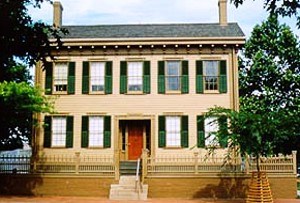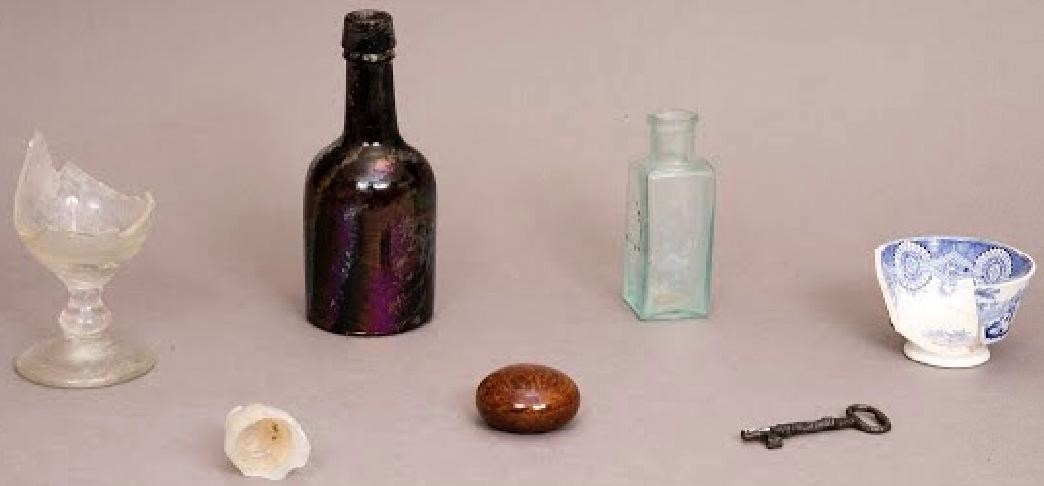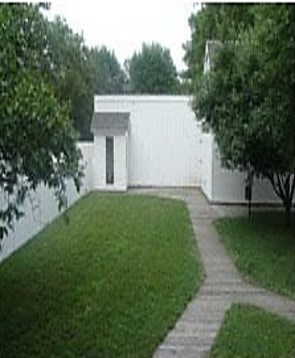Last updated: March 6, 2023
Article
Dinner at the Lincolns': Archeology of the Lincoln Home

NPS photo
The Lincolns first lived in a single room at the Globe Tavern. After the birth of their first son Robert in 1863, the Lincolns rented a small cottage. On January 16, 1844, Lincoln purchased a house at 430 S. 8th Street. The family would stay in that home until February of 1861 when they moved into the White House in Washington, D.C.
Photographs, written accounts, historical maps and drawings, and archeological excavations all reveal what life was like at the Lincolns’ home in Springfield. The house itself was originally a 1 ½ story-structure with a basement built in the Greek Revival style. The Lincolns remodeled their home extensively, moving the entire rear kitchen extension a full 5 ½ feet to the south, adding a back parlor and pantry, and raising both the front and back portions of the house to a full two stories between 1855 and 56. These additions gave them greatly-needed living space for raising their growing family (and dog Fido), housing their “hired girls,” and entertaining their hundreds of guests.
Mary Todd Lincoln was a well-known hostess. In letters dating from the 1850’s, she and her guests noted “grand fetes,” “strawberry parties” during berry season, New Year’s Eve gatherings, and dinner parties—one of which had 300 guests. Isaac Arnold, a family friend, recorded “venison, wild turkey, prairie chicken, quail, and other game” loading the table (Mansberger, 249). Coffee, cakes, ice cream, jellies, and other delicacies were also offered.

NPS photo
Hundreds of animal bones were excavated, with the majority being from cattle, sheep or goats, and pigs. Pig feet, a source of gelatin (an essential ingredient for jellies), were especially common. Archeologists discovered the bones of the turkeys and chickens mentioned by Arnold, along with other wild game such as doves, goose, and fish. The amount of these hunted animals was much higher at the Lincoln home than at their neighbors’ homes and other contemporary sites. This finding could indicate Lincoln’s life-long taste for the game he ate during his childhood.

NPS photo
Overall, excavation findings illustrate a lifestyle that, while upper-class, was not ostentatious. This corresponds to accounts of the Lincoln home as “handsome but not pretentious” where “many a pleasant hour” was spent (Bartlett and Mentz as quoted in Mansberger, 250-251).
Resources
Lincoln Home National Historic Site. National Park Service.Lincoln Home Virtual Museum Exhibit. National Park Service.
Lincoln’s Hired Girls. National Park Service.
Mansberger, Floyd. Archeological Investigations at the Lincoln Home National Historic Site, Springfield, Illinois. Prepared for the National Park Service Midwest Archeological Center. Northern Illinois University, 2007.
Teaching with Historic Places lesson plan: Lincoln Home National Historic Site: A Place of Growth and Memory. National Park Service.
Additional reports on excavations at and around the Lincoln Home in Springfield can be found on the Fever River Research website.
